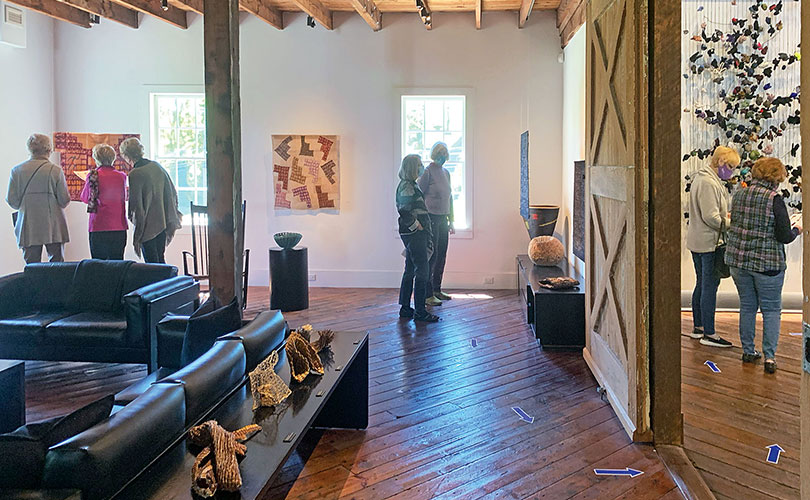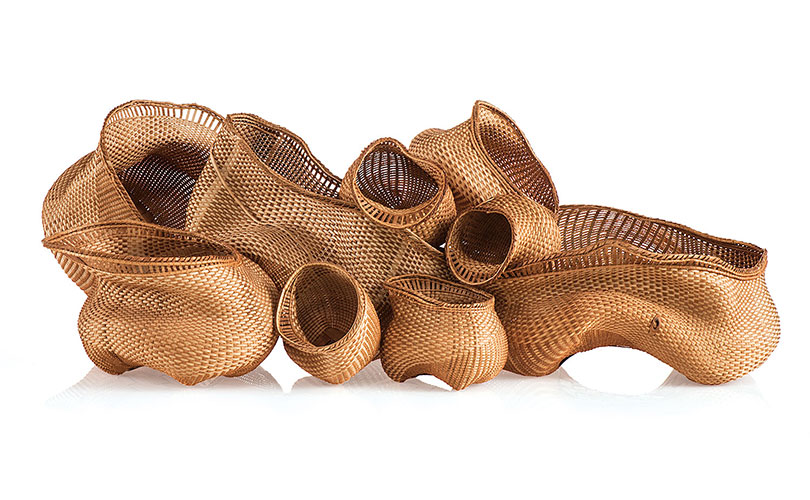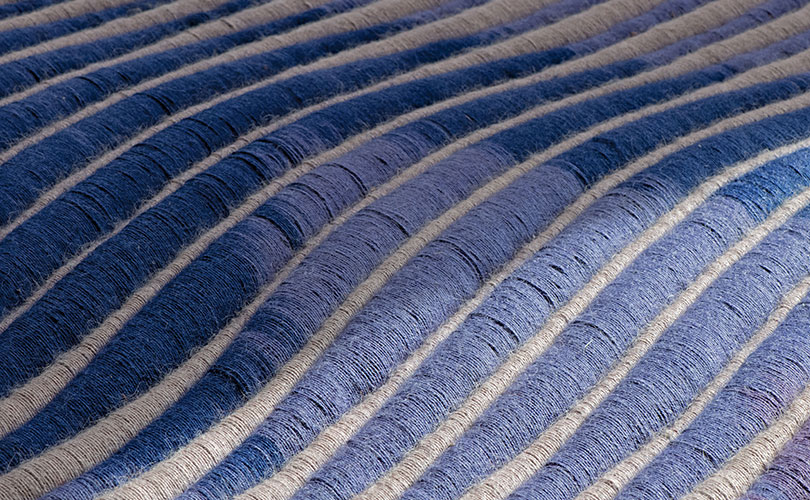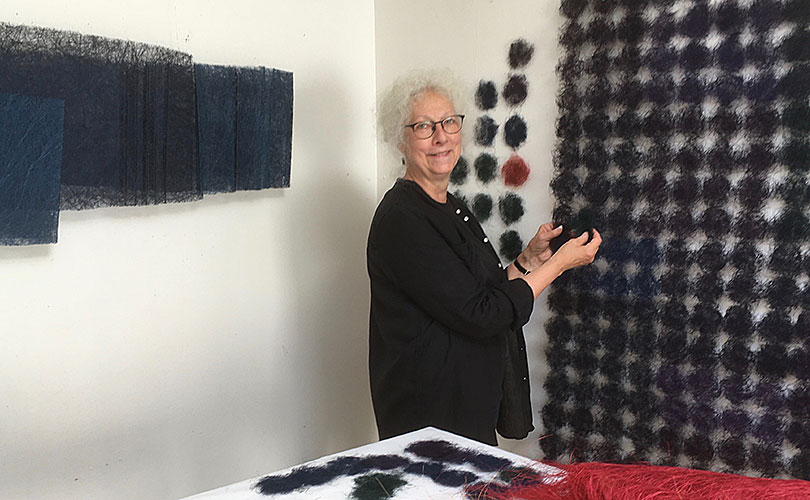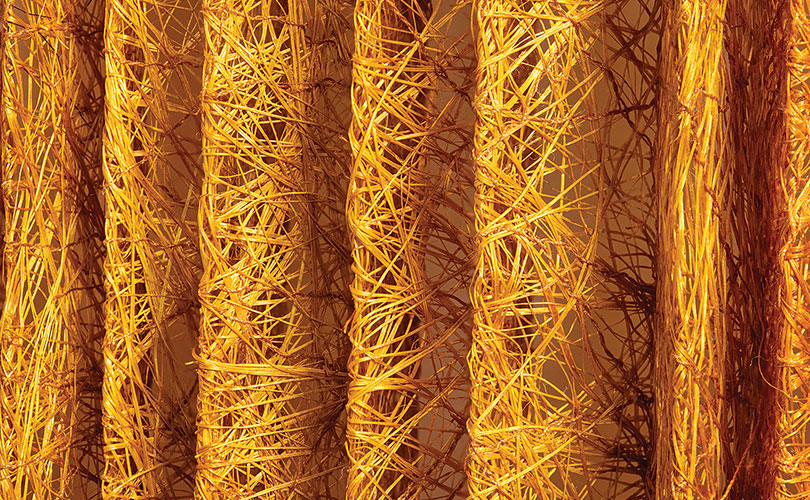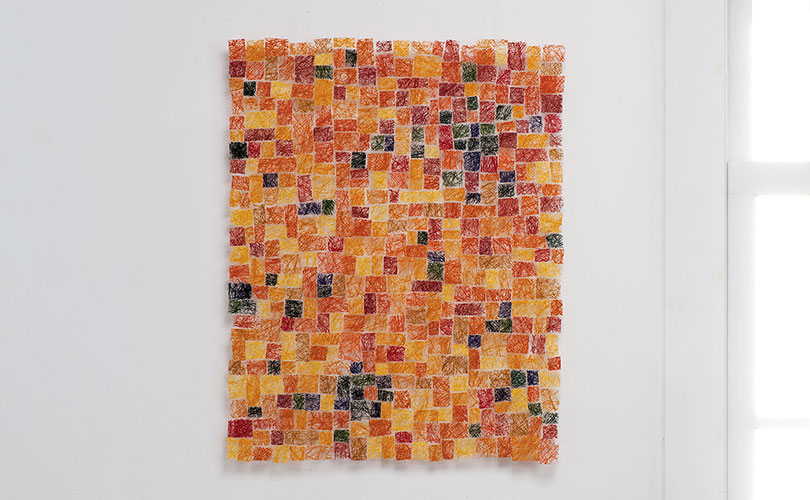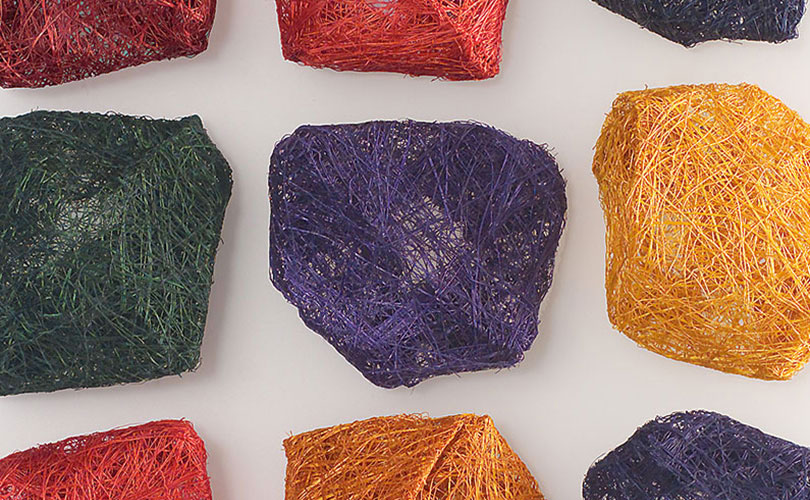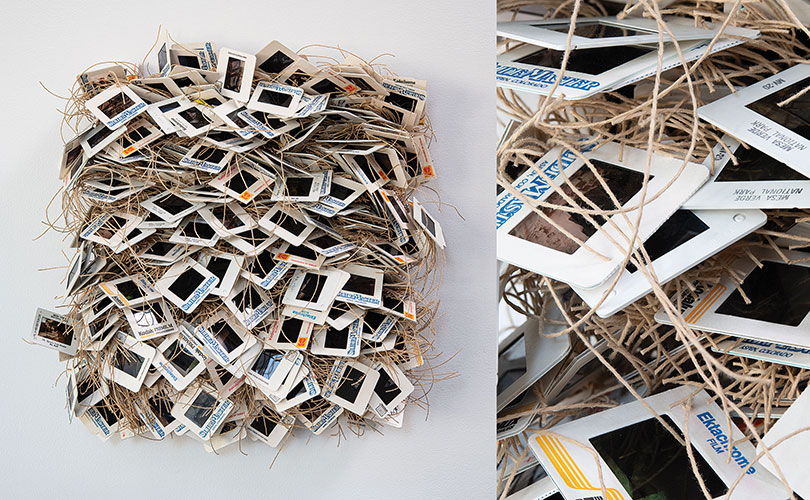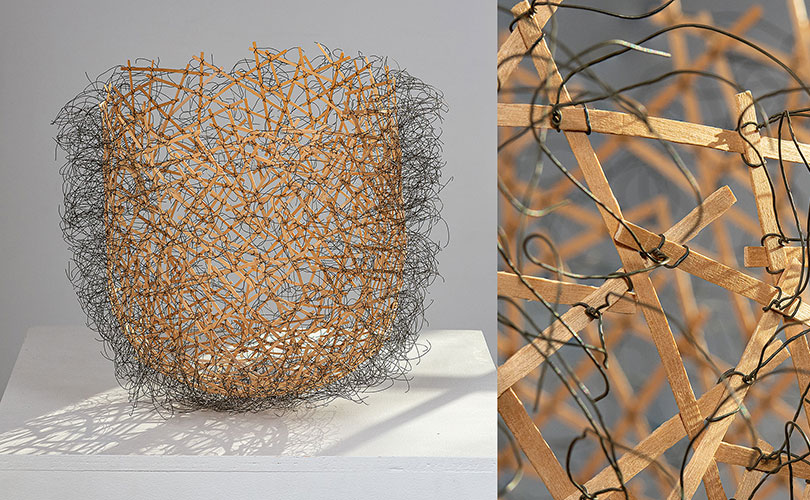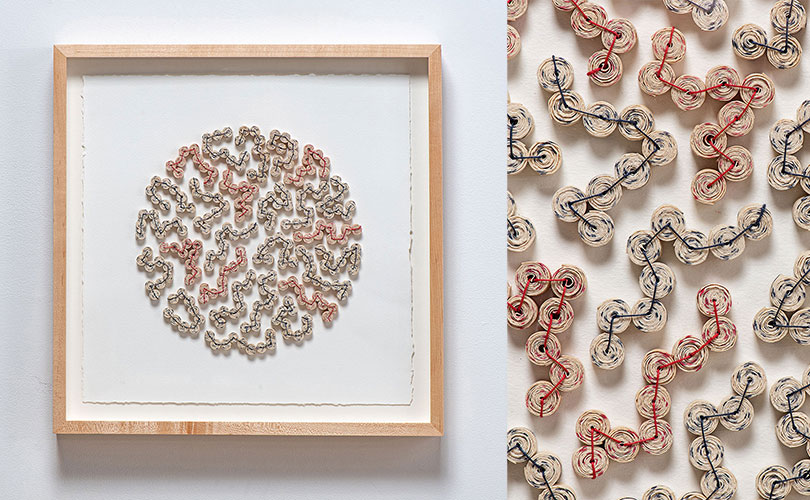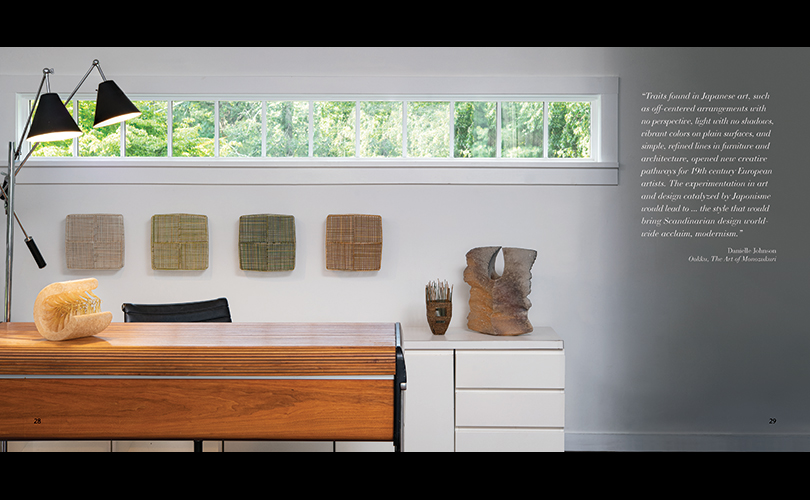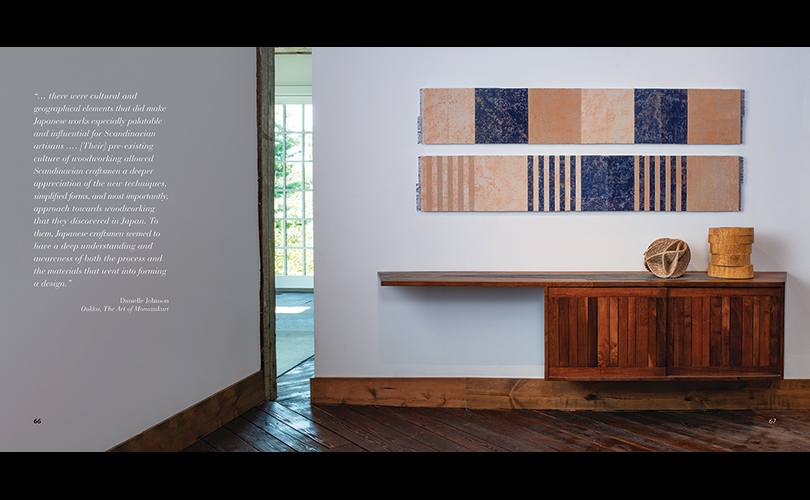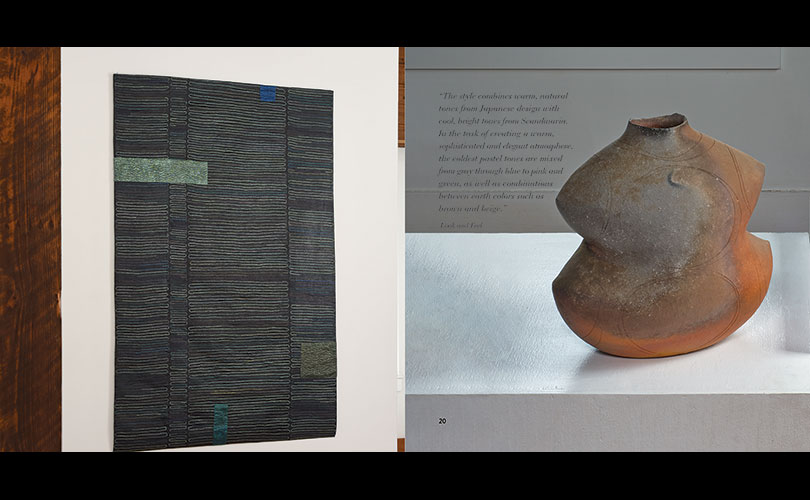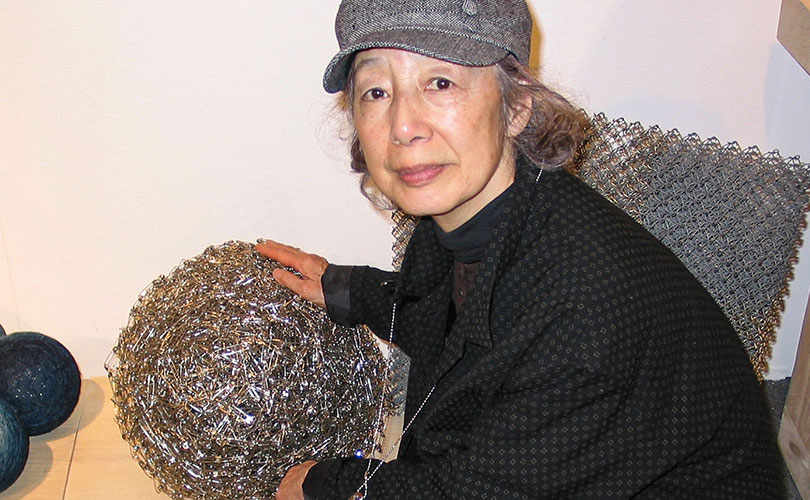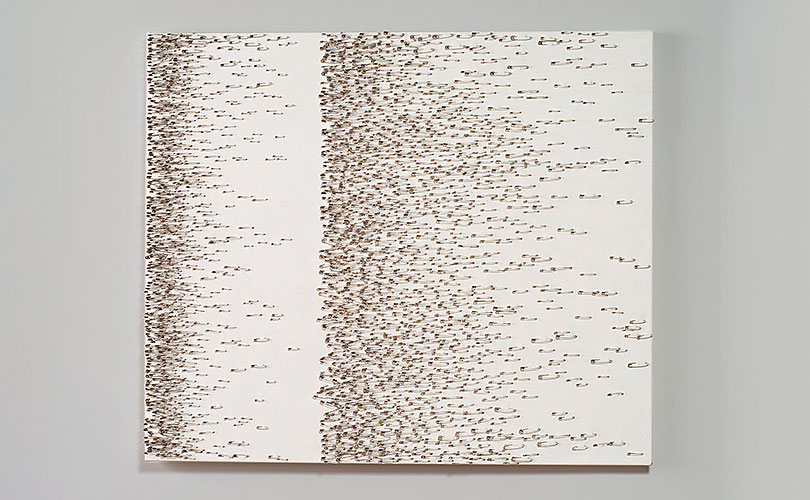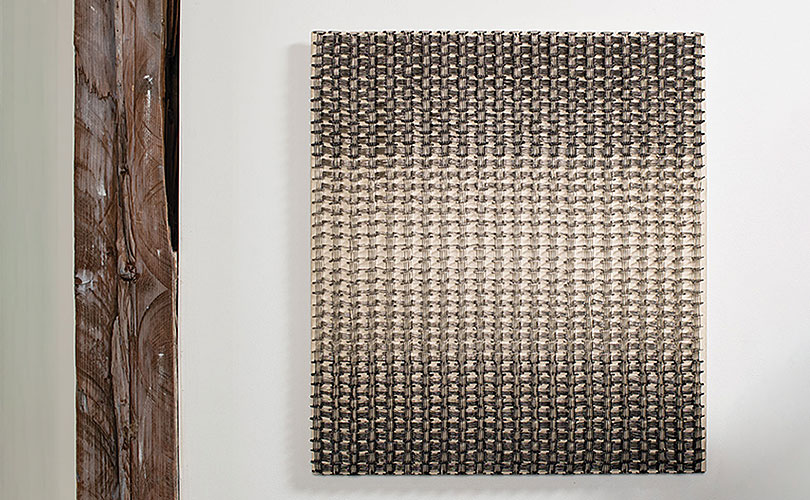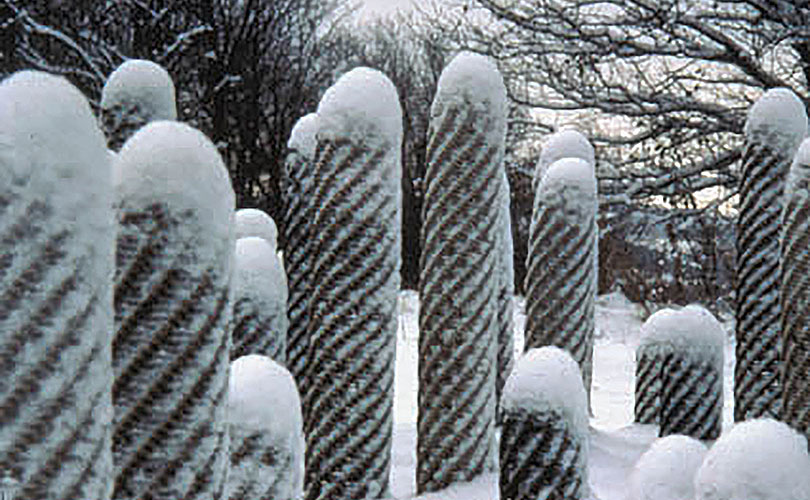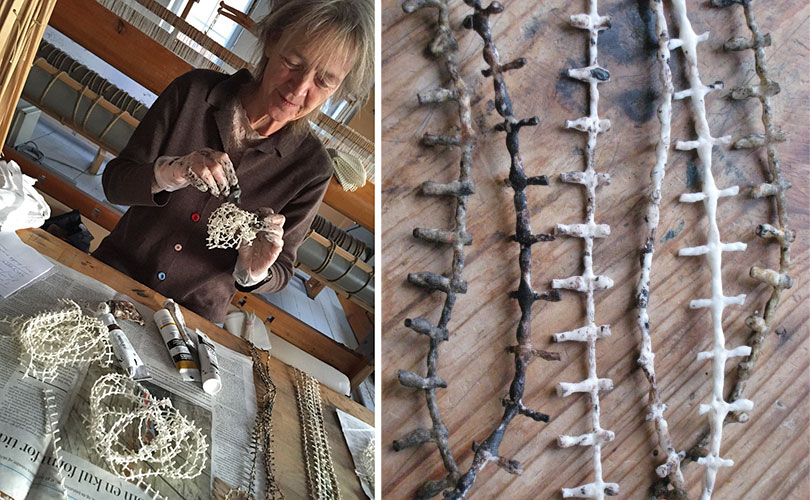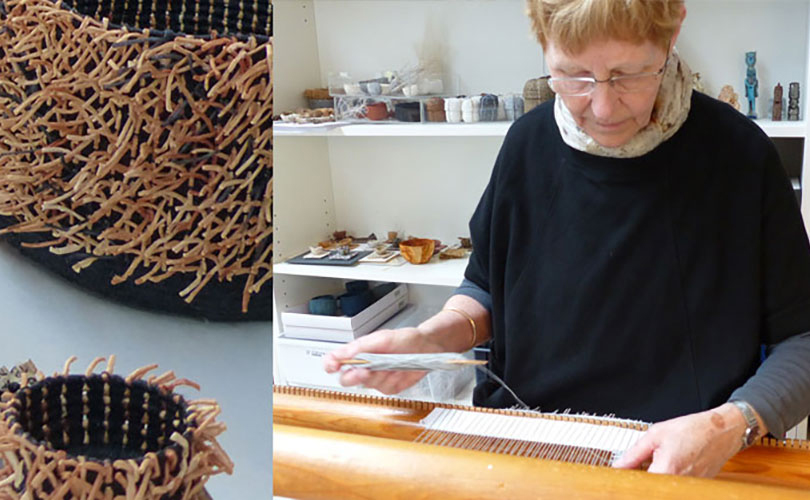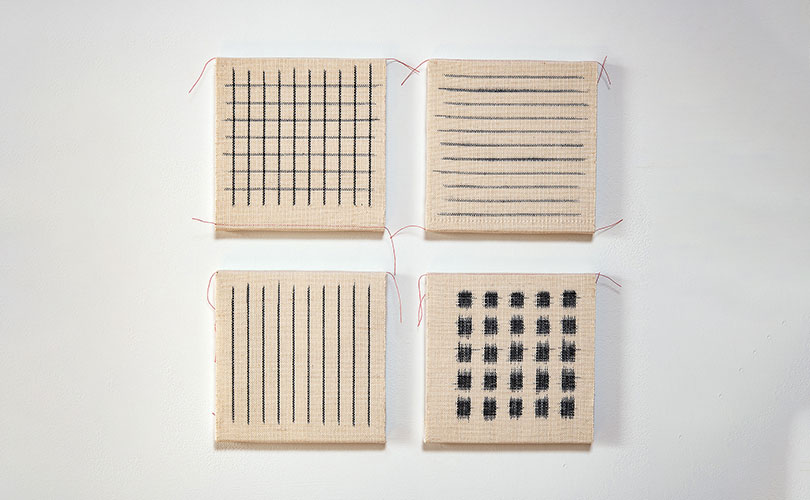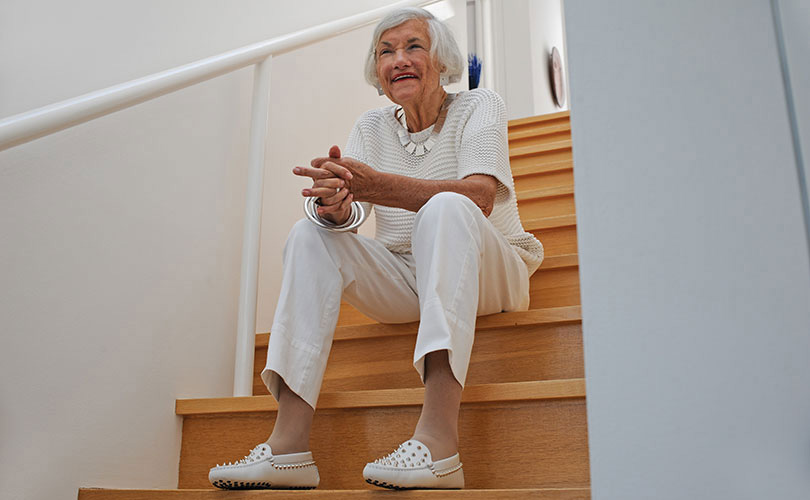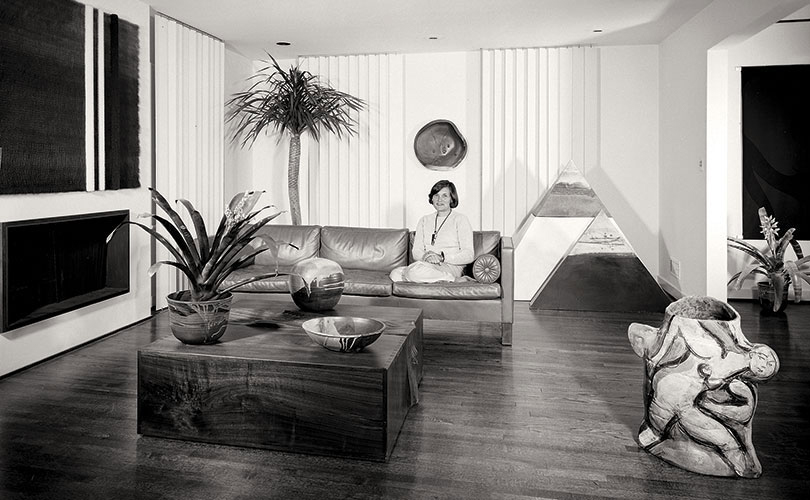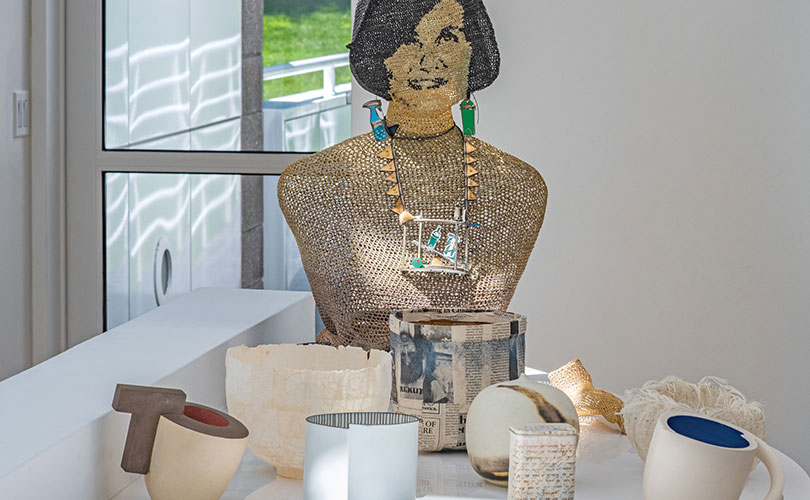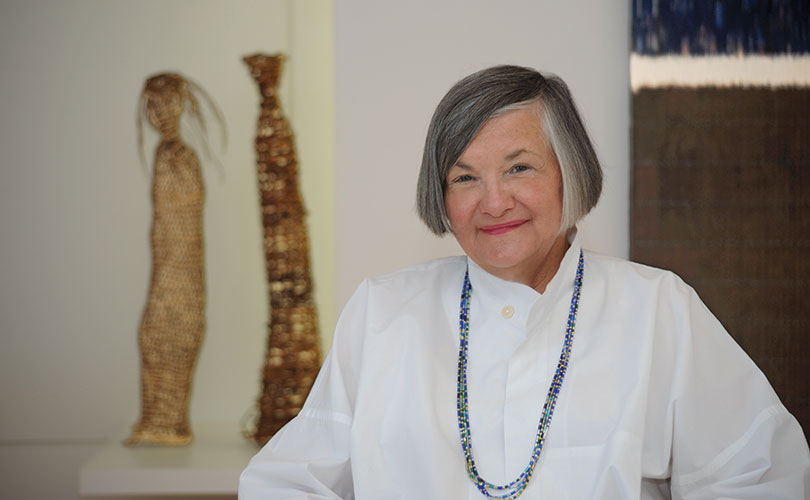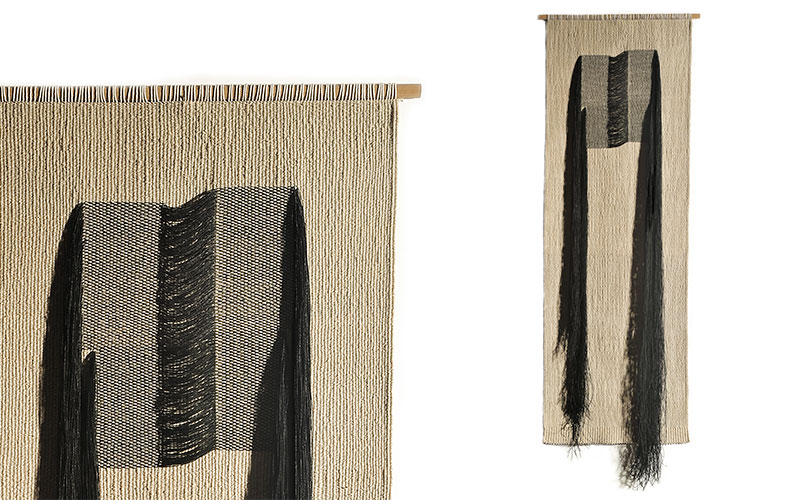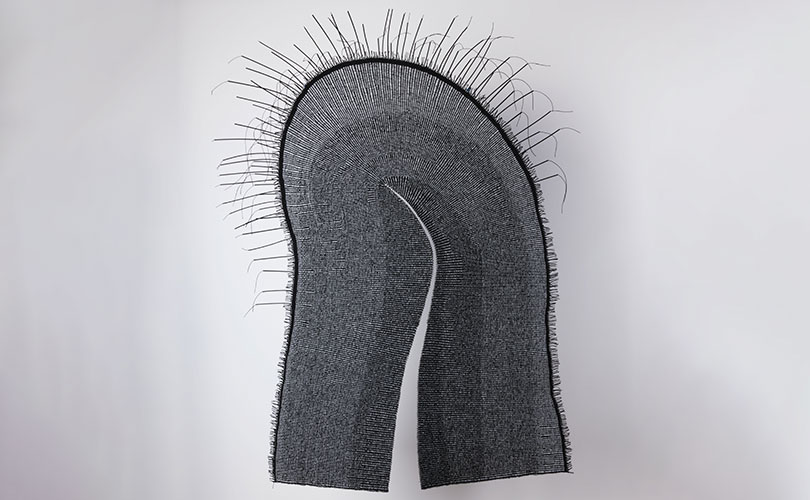
Textile artist Marianne Kemp is a specialist in weaving with horsehair. She is passionate about exploring unconventional weaving techniques in her art. That passion, combined with her craftsmanship, is clearly visible in the work she creates. “I’m fascinated by the movement of the weavings, how the horsehair manifests in the net of the weaving technique,” she says.

Some creations, almost-mathematically precise, challenge viewers to become introverted and still. Other work is more extroverted and playful, displaying an exuberant cheerfulness. In either case, her work attracts the eye and stimulates an urge to touch For Tube Waves, for example, Kemp found her inspiration in the rhythm of the waves. “The flowing colors, going from light silver to aqua, dark purple/blue to deep green, are rendered in the three-dimensional weaving technique I’ve created,” she explains. The ‘tubes’ flow in and over each other, which makes them appear to dance off the surface, depending on your position. From a distance, it’s a dynamic piece; upon closer inspection, there are many different details to discover.”
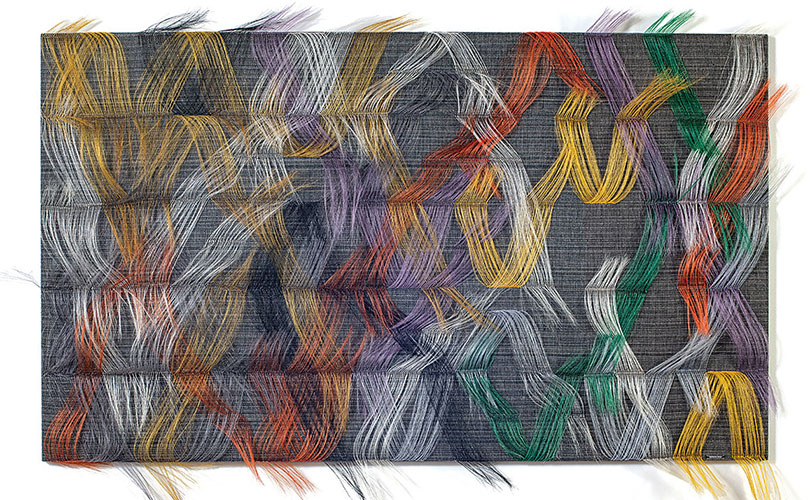
Kemp has combined an interest in an architectural weaving process with an appreciation for organic material, creating objects with elements that change space but are experienced as one. In Vibrant Conversation, the top and the bottom layer are embraced in a knot, showing an array of different perceptions in cultural traditions. The work endeavors to tie different generations together via storytelling, confronting collective knowledge with new experiences, prompting new insights.
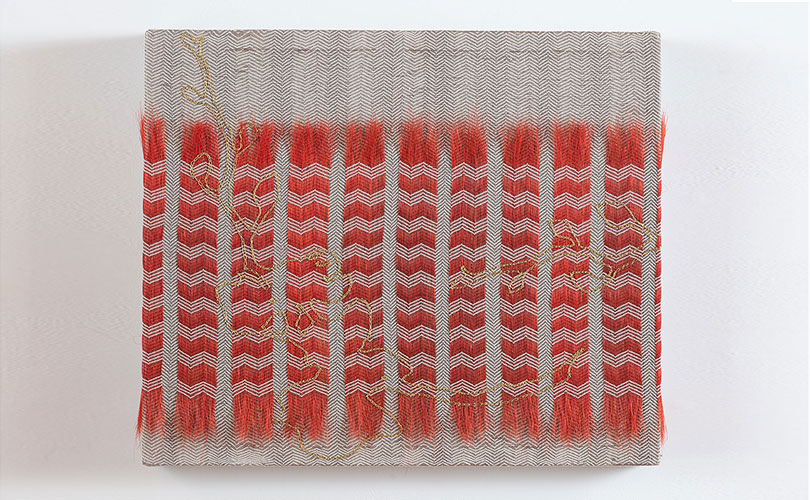
In the stitched and woven Orchid, dyed red horsehair woven in between a delicate herringbone background highlights Kemp’s supreme eye for detail. For Kemp weaving is a form of meditation. “It is the only time of day that I do one thing at the time and think (solely) about one thing,” Kemp says. Weaving allows Kemp to give her brain a rest and explore her creative intuition — a good outcome for us.
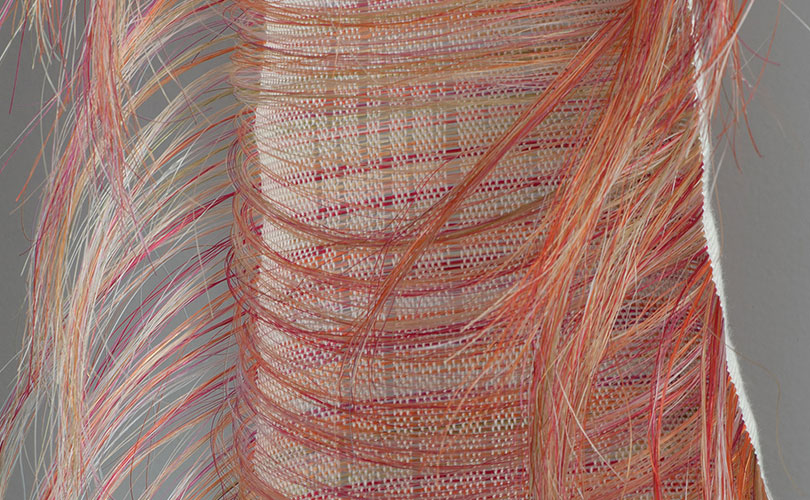
Kemp’s work will be included in browngrotta arts’ 2022 Art in the Barn exhibition, May 7 – May 15, 2022.

